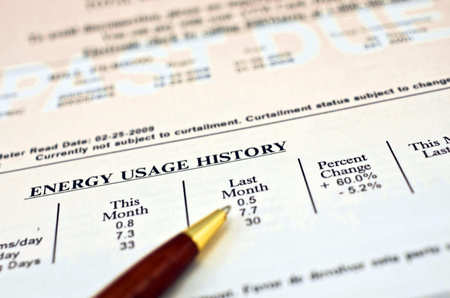
High energy bills are a common frustration for many, straining household budgets and causing financial stress. The relentless rise in utility costs can feel overwhelming, particularly for families and individuals trying to balance their expenses in an increasingly costly living environment. This financial burden is not just about numbers on a bill; it affects daily life, sometimes forcing tough decisions between energy usage and other necessities. Beyond the financial impact, there's also the concern of environmental sustainability, making the issue of high energy bills a multifaceted problem that demands practical solutions. Here are some energy-saving tips as we head into the colder months.
1. Maximize Insulation Efficiency
One of the most common issues homeowners face during colder months is the loss of heat through poorly insulated walls, roofs, and windows. This not only leads to a chilly and uncomfortable living environment but also results in higher energy bills as heating systems work overtime to compensate for the heat loss.
Start by inspecting your attic and walls: these are prime areas where heat can escape. Adding or upgrading insulation in these areas can significantly reduce heat loss.
Don't overlook windows and doors. Double-glazing windows and using weather-stripping around doors can further prevent heat from escaping. In areas with particularly harsh winters, consider heavy curtains or thermal blinds to provide an additional layer of insulation.
2. Practice Smart Thermostat Usage
Smart thermostats offer the ability to program heating schedules aligned with your daily routine, ensuring your home is warm when needed and conserving energy when it’s not. For instance, setting the thermostat to lower the temperature during the night or when the house is empty can result in significant savings.
To maximize benefits, place thermostats away from direct sunlight, drafts, doorways, or windows, as these can affect temperature readings. Also, resist the urge to crank up the thermostat drastically; a moderate and consistent setting is more energy-efficient.
For households without a smart thermostat, manually lowering the temperature by just a few degrees during hours of inactivity can still offer substantial energy savings. Each degree lowered over an eight-hour period can reduce your energy bill by around 1%.
3. Install Energy-Efficient Lighting
A significant portion of household energy usage, especially in the longer, darker months of the year, goes towards lighting. Switching to energy-efficient lighting is an easy yet effective way to reduce this consumption. LED bulbs are an excellent choice; they use up to 75% less energy and last 25 times longer than traditional incandescent bulbs. This not only cuts down on your electricity bills but also reduces the frequency of replacements. Consider using motion sensors or timers for outdoor lighting to ensure they are only on when needed. In indoor spaces, maximize natural light during the day and turn off lights in unoccupied rooms.
4. Have Regular HVAC Maintenance
Conducting routine HVAC maintenance is crucial for ensuring the system's efficiency, particularly during colder months when heating demands are high. Neglecting maintenance can lead to decreased efficiency and increased energy consumption, leading to higher utility bills. Regular check-ups by a professional can identify and resolve issues like clogged filters, leaky ductwork, or inefficient operation. Homeowners should replace or clean air filters regularly, as a dirty filter restricts airflow and forces the system to work harder. Also, ensuring that vents are not blocked by furniture or curtains can improve air circulation, enhancing the system’s efficiency. Routine maintenance, such as duct cleaning, not only optimizes energy usage but also extends the lifespan of the entire HVAC system, making it a cost-effective practice for maintaining a warm and comfortable home environment.
5. Leverage Natural Heat Sources
Leveraging natural heat sources is an effective and eco-friendly strategy to reduce reliance on artificial heating during colder months. One of the simplest ways to do this is by maximizing sunlight exposure. Open curtains during the day to let in natural light and warmth, especially in south-facing rooms, and close them in the evening to retain heat. Consider rearranging your living space so that frequently used areas are located where natural light is abundant. Planting deciduous trees near windows can provide shade in the summer while allowing sunlight to penetrate and warm your home in the winter. Integrating these natural heating methods can significantly lower energy bills and create a more sustainable living environment.
6. Install Hot Water on Demand
Incorporating an on-demand hot water system is a highly efficient way to reduce energy consumption and save on water. Traditional water heaters continuously heat and reheat water, leading to unnecessary energy use and higher bills. In contrast, on-demand or tankless water heaters heat water directly as it's needed, providing hot water instantly and only when required. This eliminates the energy wasted in maintaining a full hot water tank at a constant high temperature. Additionally, these systems typically occupy less space and have a longer lifespan than conventional water heaters. By switching to an on-demand system, households can enjoy significant energy savings and an uninterrupted supply of hot water, making it a smart choice for both efficiency and convenience.
7. Seal Drafts and Leaks
If you have an older home, you may have invisible heat loss occurring. You may be aware of some of the more obvious ones, but even small drafts can add up to a lot of energy loss. Common areas where drafts occur include windows, doors, and places where plumbing and electrical lines enter the house. To address this, apply weatherstripping around doors and windows to seal gaps. For larger openings, use caulk or expandable foam. Installing door sweeps on exterior doors can also block cold air from entering underneath. Checking for drafts around electrical outlets on exterior walls and sealing them with foam gaskets is another step that can make a noticeable difference.
These energy-saving tips can be implemented relatively easily, and with minimal cost. The large savings you experience will come over a long period of time, but you may notice a decrease in your next energy bill. For help with cash flow and managing your household budget, work with a CPA.
by Kate Supino
